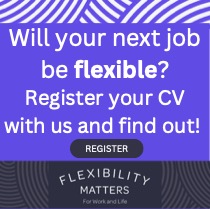Visual systems that reduce friction in day-to-day movement
Movement through a space should feel natural. When someone enters a building, whether it’s their first visit or their fiftieth, they should instinctively know where to go. But too often, buildings fight against this basic flow. Hallways feel like mazes, rooms don’t signal their purpose, and people get stuck in loops of backtracking and second-guessing. This friction slows everyone down.
It’s more than an inconvenience. Poorly designed navigation systems wear on attention and mood. Cognitive load spikes. Instead of focusing on the purpose of the visit, whether it’s a meeting, a service, or simply finding a restroom, people burn energy figuring out where they’re supposed to be. That’s wasted mental effort.
Effective visual systems remove that burden. They help people move through environments with less thought, freeing up brainpower for more important things. This matters in every setting, but corporate wayfinding is one space where the ripple effects are easy to see. It leads to reduced late arrivals, lowered stress, and better mood.
Why the brain loves predictability
The brain is wired to spot patterns. It seeks out cues in its surroundings to make quick decisions. When environments reinforce those patterns, the brain completes its analysis quicker, and movement becomes smoother.
Think about how airports guide travelers. They have a departure board near the entrance and color-coded terminals. All of them feel intuitive because these cues build on what the brain expects.
But when these cues are inconsistent, friction kicks in. Even a small disconnect can make navigation confusing. A meeting room on the second floor labeled differently from those on the third breaks the pattern. When things like this happen, our brain is forced to pause and re-evaluate.
The power of first impressions
Navigation starts before anyone takes their first step inside. The building’s exterior should give visual hints about entry points. It should also have instructions on how the interior might flow. Clear sightlines and open spaces invite movement, while blockages trigger hesitation.
Once inside, consistent systems reduce doubt. When colors and symbols stay steady across a building, the brain learns to trust the system. Trust makes movement faster.
This trust is why corporate wayfinding systems work best when they blend with the company’s culture. They aren’t standalone add-ons. They align with how the organization presents itself. That consistency between brand and space cuts down on mental friction.
How to design for cognitive ease
Reducing friction isn’t about adding more signs. It’s about making the environment talk back to the person moving through it. A well-designed space helps people make decisions without feeling like they’re working at it.
Here are key elements that keep movement fluid:
- Landmarks matter. Unique elements like artwork, lighting fixtures, or architectural features help anchor memory. People remember the “hall with the green mural” better than “the second hallway on the left.”
- The line of sight is underrated. Whenever possible, let people see where they’re headed. Long, uninterrupted views encourage forward movement.
- Color coding works best when it ties to zones. Assigning colors to specific areas, like floors or departments, builds a mental map faster.
- Repetition builds trust. Using the same icons, fonts, and colors throughout creates a system people can rely on.
In corporate environments, this approach pays off quickly. Visitors and staff move with more confidence. Meetings start on time. There’s less of that awkward pause when someone stops to squint at a directory.
Less thinking, more flow
Cognitive psychology reminds us that human attention is a limited resource. Every time someone diverts attention to figure out where they are or where they’re going, that energy siphoned away from the real reason they’re there.
When you reduce these small, everyday frictions, the benefits stack up. People feel calmer. They’re more focused when they arrive at their destination. Over time, that adds up to better engagement, fewer mistakes, and a smoother overall experience.




